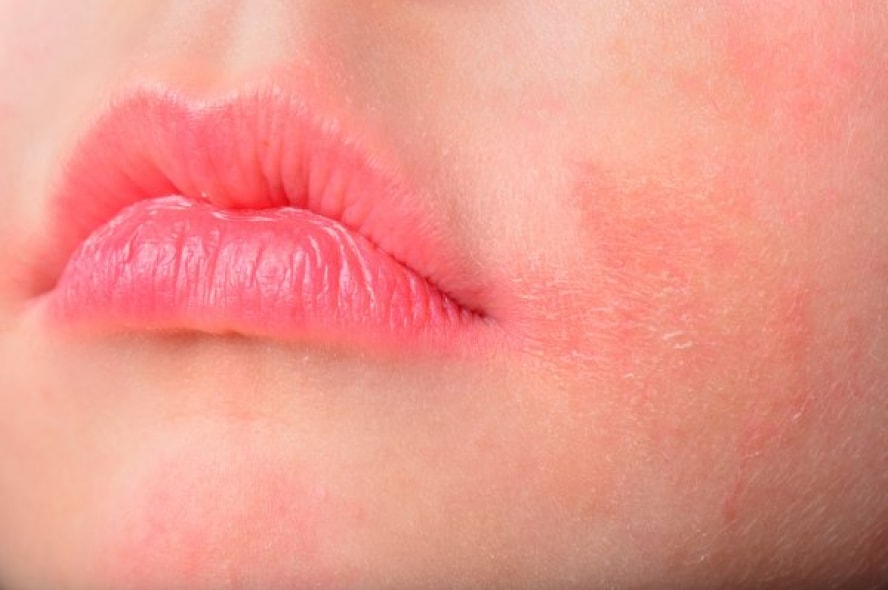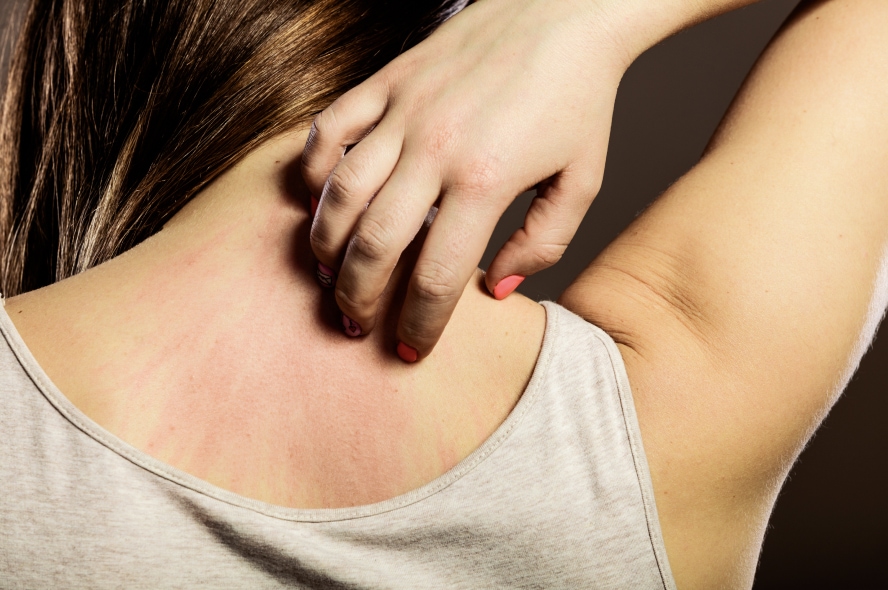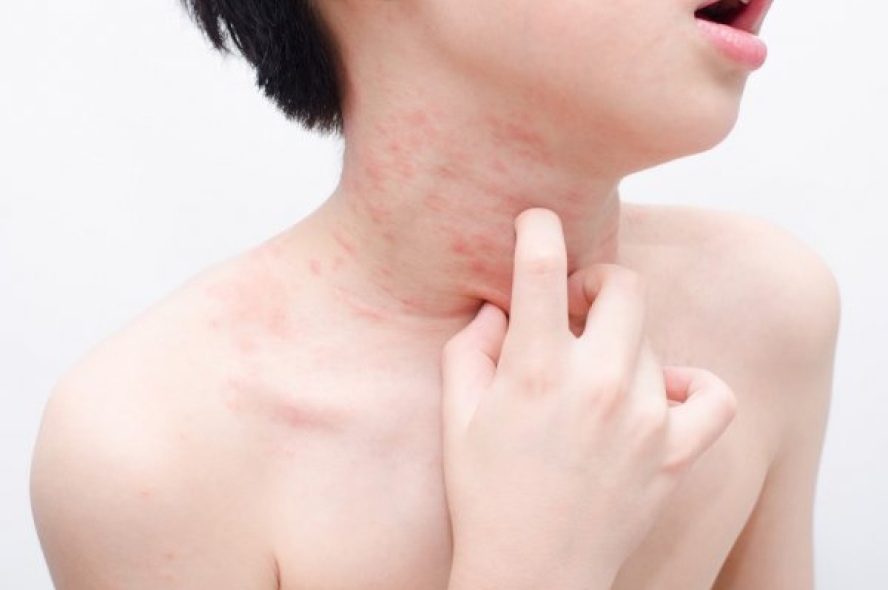
The skin can develop symptoms just like every other organ in your body. Skin irritation can come from many sources. Sometimes, skin reactions can be related to or triggered by allergens. There are various types of allergic skin disorders that allergists care for. These can include atopic dermatitis (eczema), allergic contact dermatitis, urticaria hives), and angioedema (swelling). These conditions are commonly seen in the allergist’s office and the first step is proper diagnosis.

Atopic dermatitis (Eczema)
Eczema is defined as an inflammatory skin condition that produces itchy, scaly, red patches of skin that can occur in any age patient. It is often in young children the first sign of allergies and one step in the allergic march. The skin in eczema has a leaky barrier allowing water to leak out and skin to be very dry. Eczema can be triggered by environmental exposures, food exposures, weather changes, irritant triggers and even stress. Eczema can also be worsened by skin infections. Allergy skin testing may be needed to diagnose skin triggers. An array of treatments, often used in combination, can allow excellent quality of life for patients. These can include topical moisturizers, topical steroid formulations, topical anti-inflammatory medications, antihistamines, antimicrobials, infection control measures, and immunotherapy. Recently, certain biologic agents were approved for atopic dermatitis in children as young as 6 years of age.
Contact Dermatitis
Contact dermatitis occurs when an allergen is applied topically to the skin on an acute or chronic basis. The skin then develops redness, irritation, scaling, itching and blistering at the site of contact. Contact dermatitis can be caused allergic (ACD) or irritant (ICD) triggers. An excellent example of allergic contact dermatitis is poison ivy. The skin comes in contact with an allergen and then there is a delay in symptom onset by anywhere from 24-72 hours. In that timeframe, the skin then develops the rash. Other common allergic contact triggers include cosmetics, medications, fragrances, metals and chemicals used in textiles (making clothing, hair dye, machine work). Most (80%) of contact dermatitis is caused by irritants. These can include soaps, detergents, acids/bases, solvent, saliva and urine.
Diagnosis of contact dermatitis involves a careful history and evaluation of personal care products, environment and occupation as well as the possibility of patch testing. Patch testing is performed on the back. Various dilute allergens are applied to the back and secured with tape. They remain in place for 48 hours and then the reactions are read for the severity of irritation. The key to treatment is avoidance and therefore, identifying the proper trigger becomes very important.


Urticaria/Angioedema
Urticaria (hives) and angioedema (swelling) occurs when the inflammatory cells in the skin secrete histamine. Hives are typically described as red, raised, itchy welts that look like mosquito bites. They often pop-up and resolve and tend to move around the body to different locations. They can vary in size and severity. If the cells are deeper in the skin, then swelling can develop. Hives and swelling can often come together. Once the allergist determines that urticaria or angioedema is present, the symptoms are then classified as acute or chronic. This distinction helps to guide diagnosis and treatment. It is important to understand that not all urticaria/angioedema is allergic in nature.
Acute Urticaria causes:
Chronic Urticaria causes:
Angioedema without urticaria – a special situation
The goal of treatment is to improve quality of life, suppress urticaria and swelling episodes, avoid triggers if possible, and ideally become symptom free.
It is important to understand that the medications used do not cure urticaria but suppress the symptoms. Antihistamines are considered the mainstay of therapy for hives. Often they are used in combination and usually at much higher doses than the recommended dosage. In addition, patients who fail to respond to antihistamines may be candidates for a biologic called omalizumab that is also FDA approved for the treatment of urticaria. While corticosteroids, like prednisone and prednisolone can treat hives, they are often used for short term and are not suited for long-term use.
Chronic hives can last for many years but in many patients will resolve. Your allergist can help develop a plan for chronic maintenance as well as acute outbreaks to help patients live with their hives and not suffer from them.
